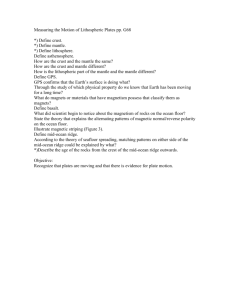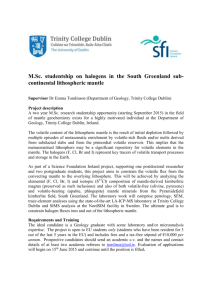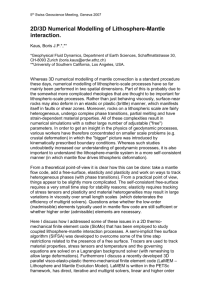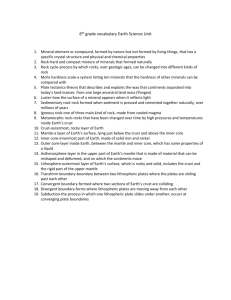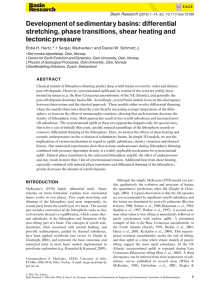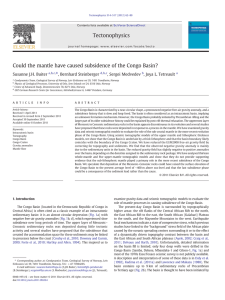The Influence of Mantle Petrology on Basin Subsidence During Rifting
advertisement
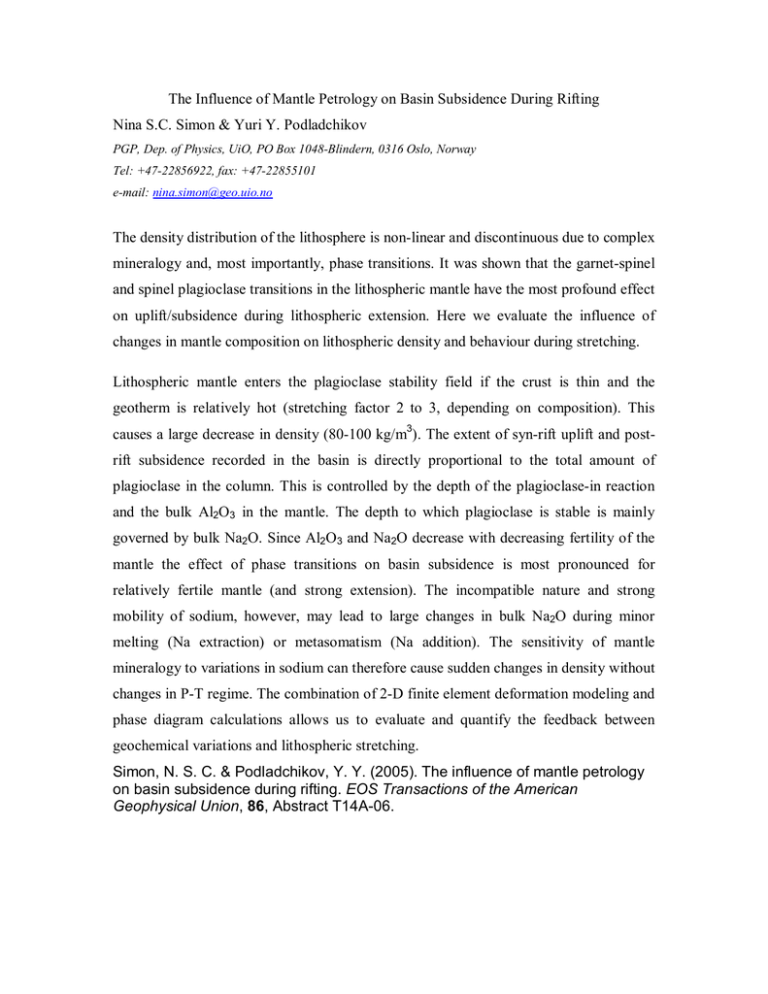
The Influence of Mantle Petrology on Basin Subsidence During Rifting Nina S.C. Simon & Yuri Y. Podladchikov PGP, Dep. of Physics, UiO, PO Box 1048-Blindern, 0316 Oslo, Norway Tel: +47-22856922, fax: +47-22855101 e-mail: nina.simon@geo.uio.no The density distribution of the lithosphere is non-linear and discontinuous due to complex mineralogy and, most importantly, phase transitions. It was shown that the garnet-spinel and spinel plagioclase transitions in the lithospheric mantle have the most profound effect on uplift/subsidence during lithospheric extension. Here we evaluate the influence of changes in mantle composition on lithospheric density and behaviour during stretching. Lithospheric mantle enters the plagioclase stability field if the crust is thin and the geotherm is relatively hot (stretching factor 2 to 3, depending on composition). This causes a large decrease in density (80-100 kg/m3). The extent of syn-rift uplift and postrift subsidence recorded in the basin is directly proportional to the total amount of plagioclase in the column. This is controlled by the depth of the plagioclase-in reaction and the bulk Al2O3 in the mantle. The depth to which plagioclase is stable is mainly governed by bulk Na2O. Since Al2O3 and Na2O decrease with decreasing fertility of the mantle the effect of phase transitions on basin subsidence is most pronounced for relatively fertile mantle (and strong extension). The incompatible nature and strong mobility of sodium, however, may lead to large changes in bulk Na2O during minor melting (Na extraction) or metasomatism (Na addition). The sensitivity of mantle mineralogy to variations in sodium can therefore cause sudden changes in density without changes in P-T regime. The combination of 2-D finite element deformation modeling and phase diagram calculations allows us to evaluate and quantify the feedback between geochemical variations and lithospheric stretching. Simon, N. S. C. & Podladchikov, Y. Y. (2005). The influence of mantle petrology on basin subsidence during rifting. EOS Transactions of the American Geophysical Union, 86, Abstract T14A-06.
